TL;DR: Strengthening empathy for users and streamlining a new library service by gathering data and creating user personas.
Project Context
The UCSF Library's new instructional design service seeks to support UCSF schools and programs in improving student engagement and learning outcomes. After a gradual rollout of the new service, the instructional designer reached out to me for help in further defining the needs and pain points of target users. As an invaluable tool for empathizing, understanding, and communicating needs, behaviors, and motivations, I suggested the use of user personas.
In the course of creating archetypal instructional design personas, my research involved staff members from different departments and instructional designers from all over UCSF.
Insights and Outcomes
Through observing in-person and remote consultations and distributing a survey to various instructional design stakeholders and clients, valuable insights were gathered on user values, needs, and behaviors. I used the following grid as a template so the research team could brainstorm and build profiles of target users of the service.
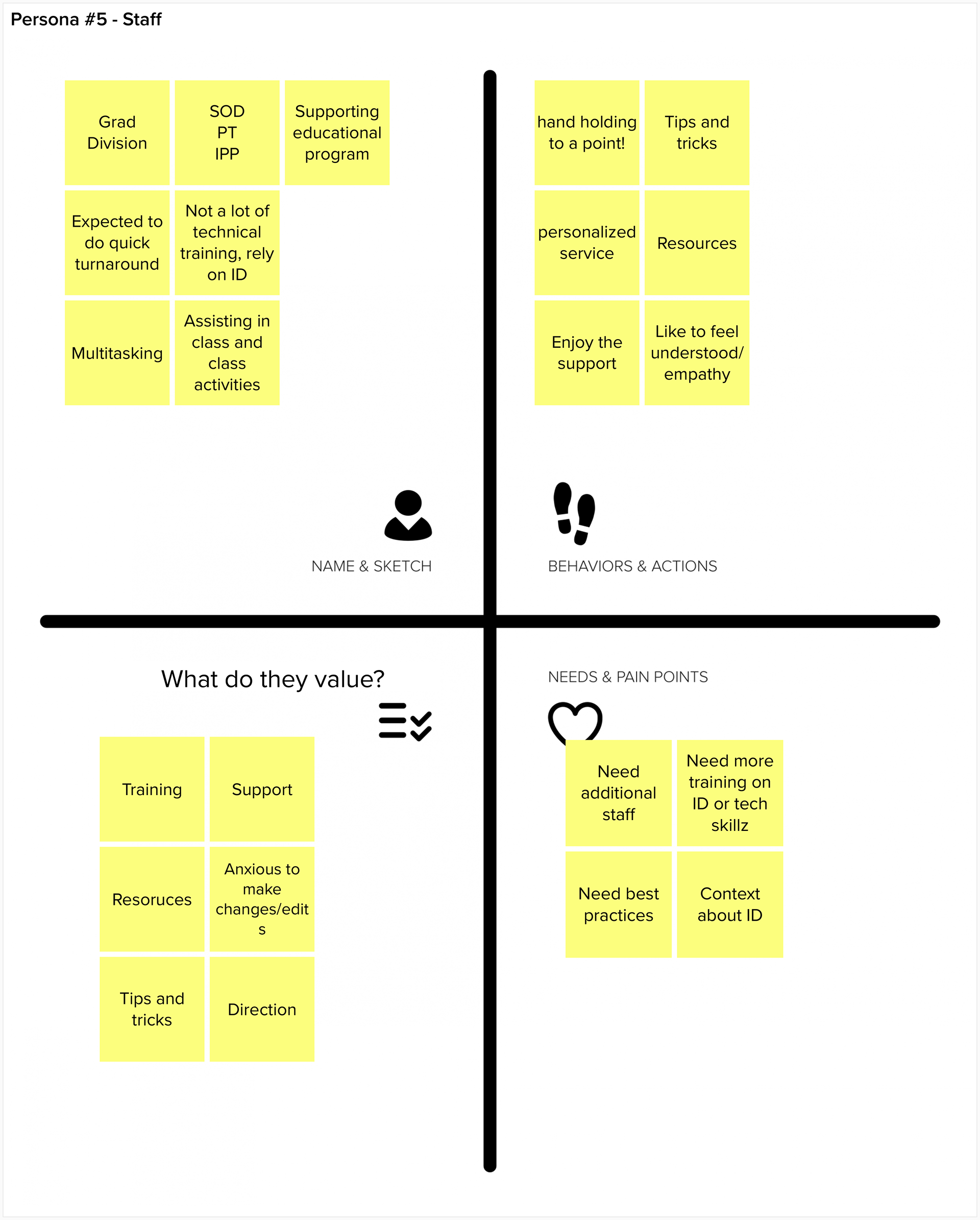
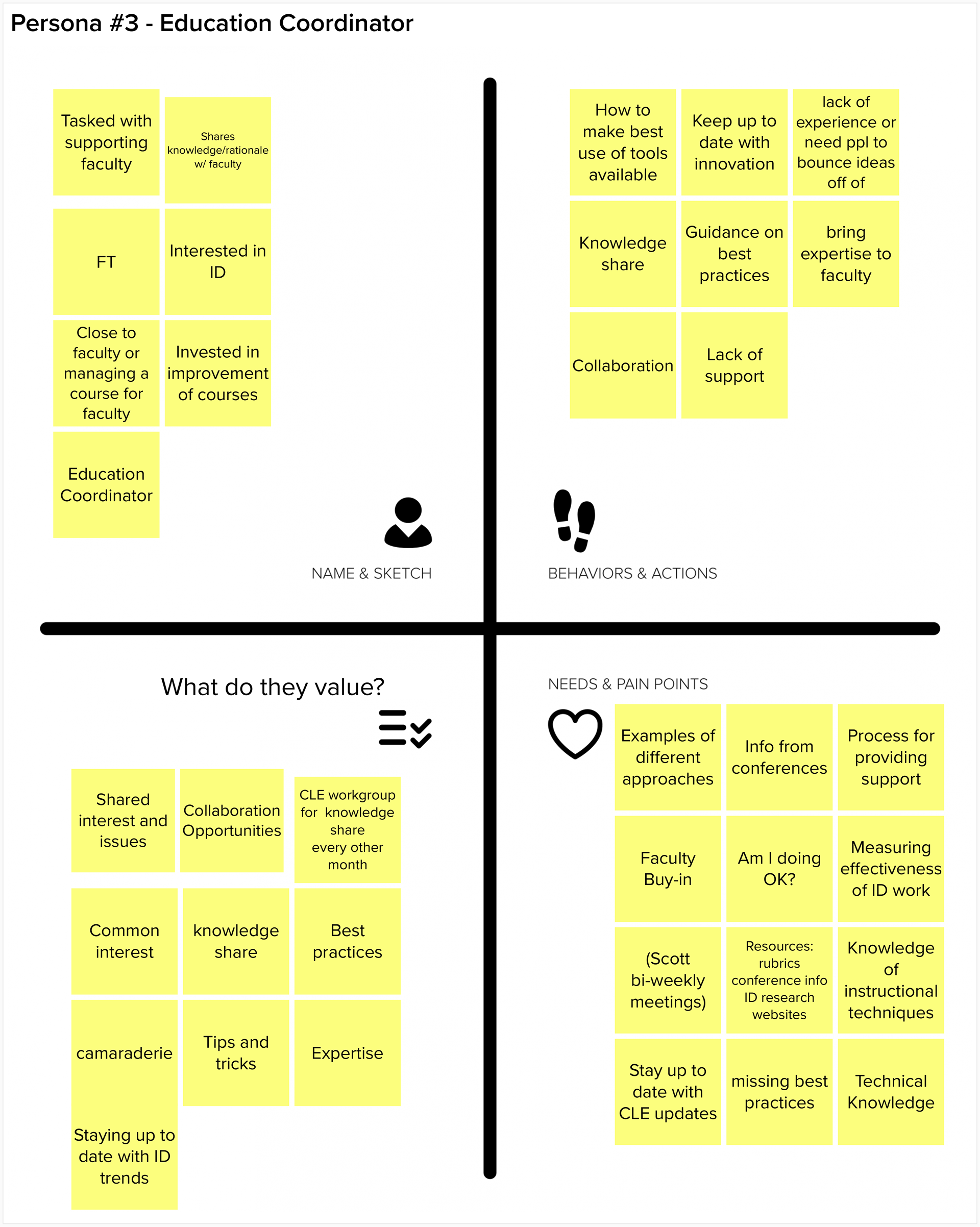
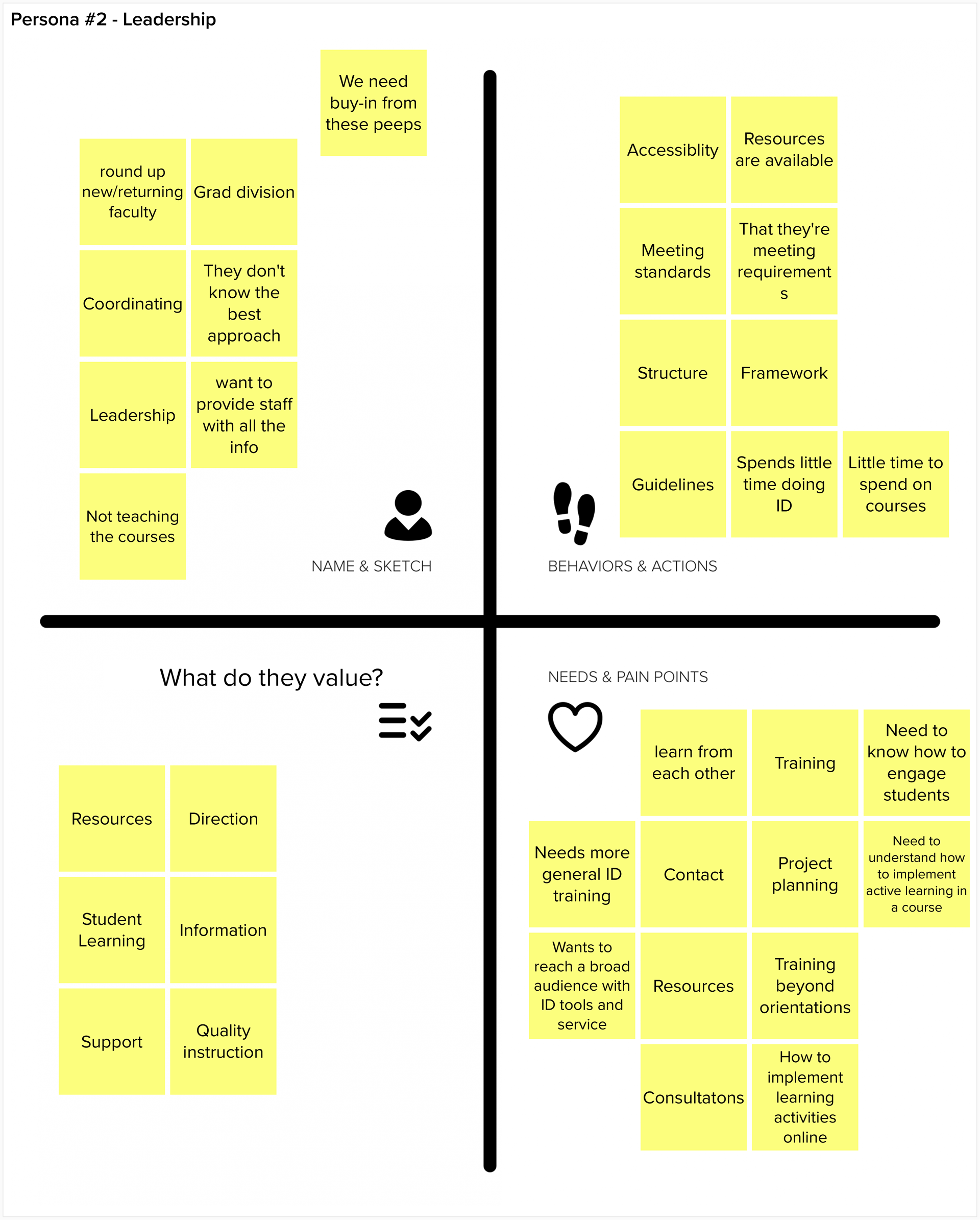
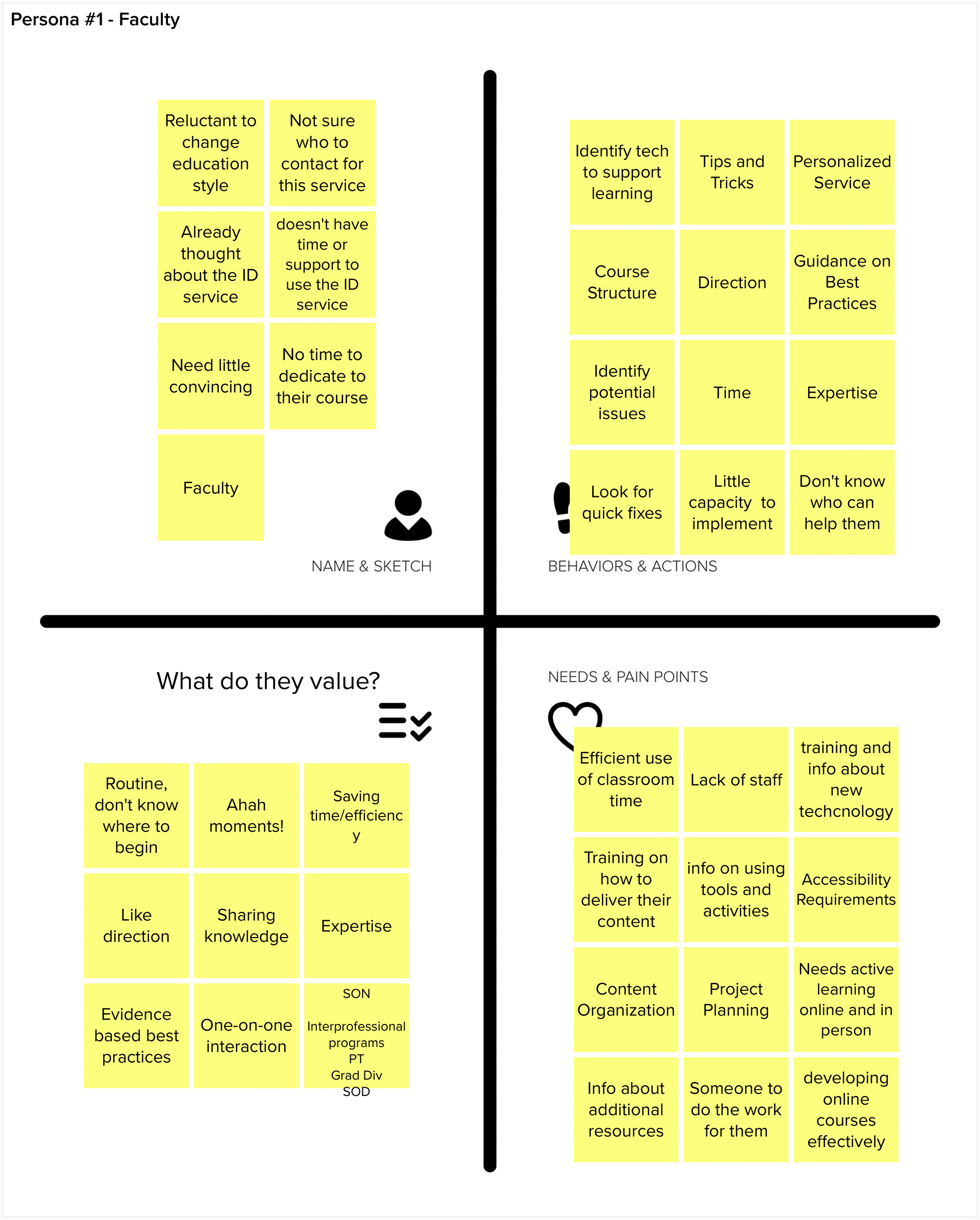
We gave each persona a name, face, department, personality traits, and a list of attributes like goals and challenges.
For instance, Felicity Faculty is described as someone who is busy and lacks staff support to implement course design needs. This persona allows the instructional designer and library staff to empathize with someone who doesn’t have the time to search for and learn new ID technologies or best practices.
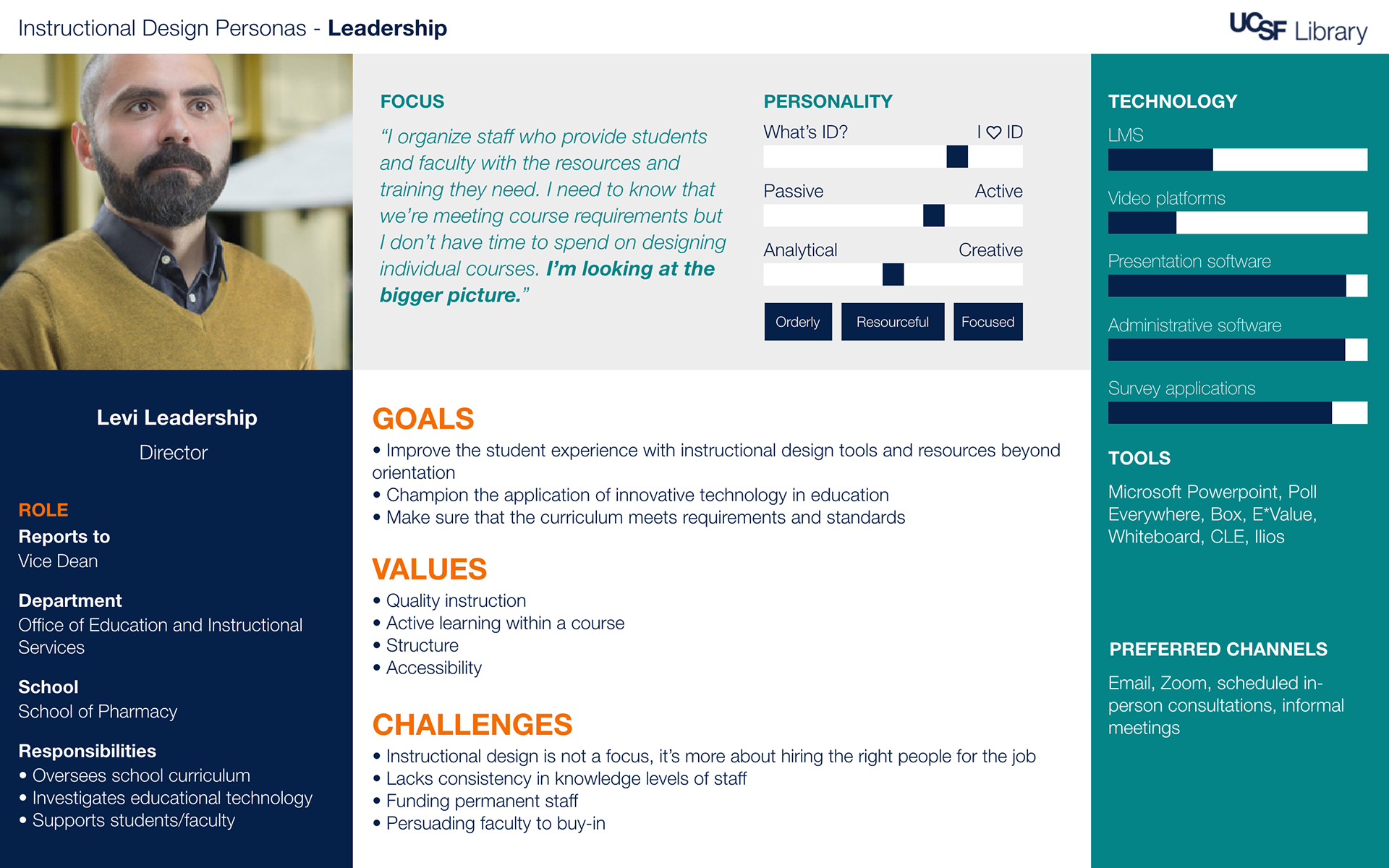
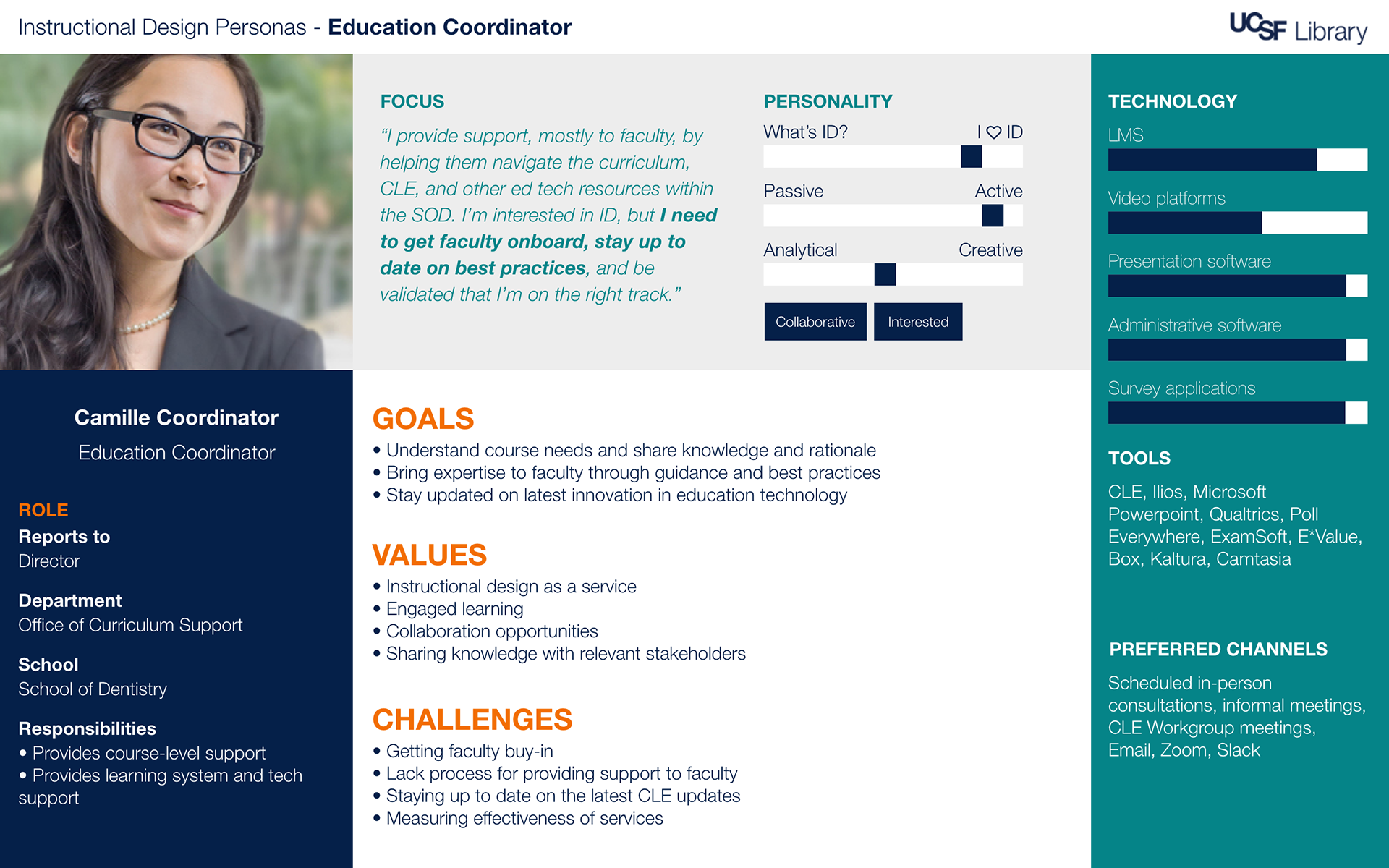
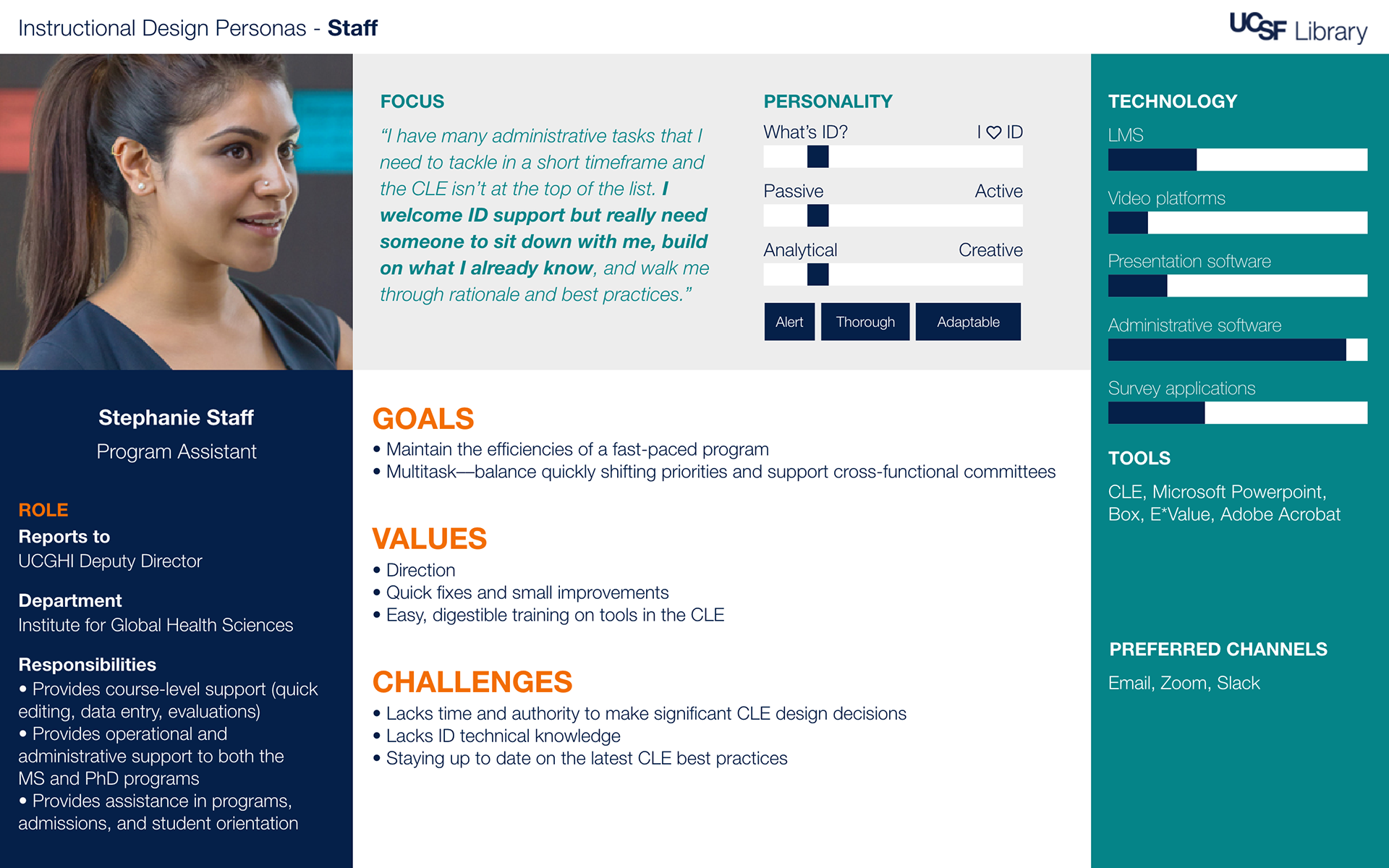
How personas helped
Designing and referring to these personas has helped the instructional designer to uncover users' needs and streamline processes, like onboarding new designers. Stepping into target users’ shoes allowed her to understand what problems clients are trying to solve, and address what kinds of support they might need.
From talking with target users, we discovered that they needed an easier way to interact with instructional design experts on campus. By introducing a self-service scheduling tool to the instructional design webpage that syncs with the instructional designer’s calendar, users can now easily book a one-on-one consultation online or in-person.
While developing the personas with the research team, we looked closely at the types of questions that were being asked during consultations and simplified an existing client intake form and rephrased questions, which lead to more valuable information and more efficient kick-off consultations.
As an added benefit, looking closely at the target audience has helped to recognize potential UCSF instructional design influencers who can help spread the word on the new service.